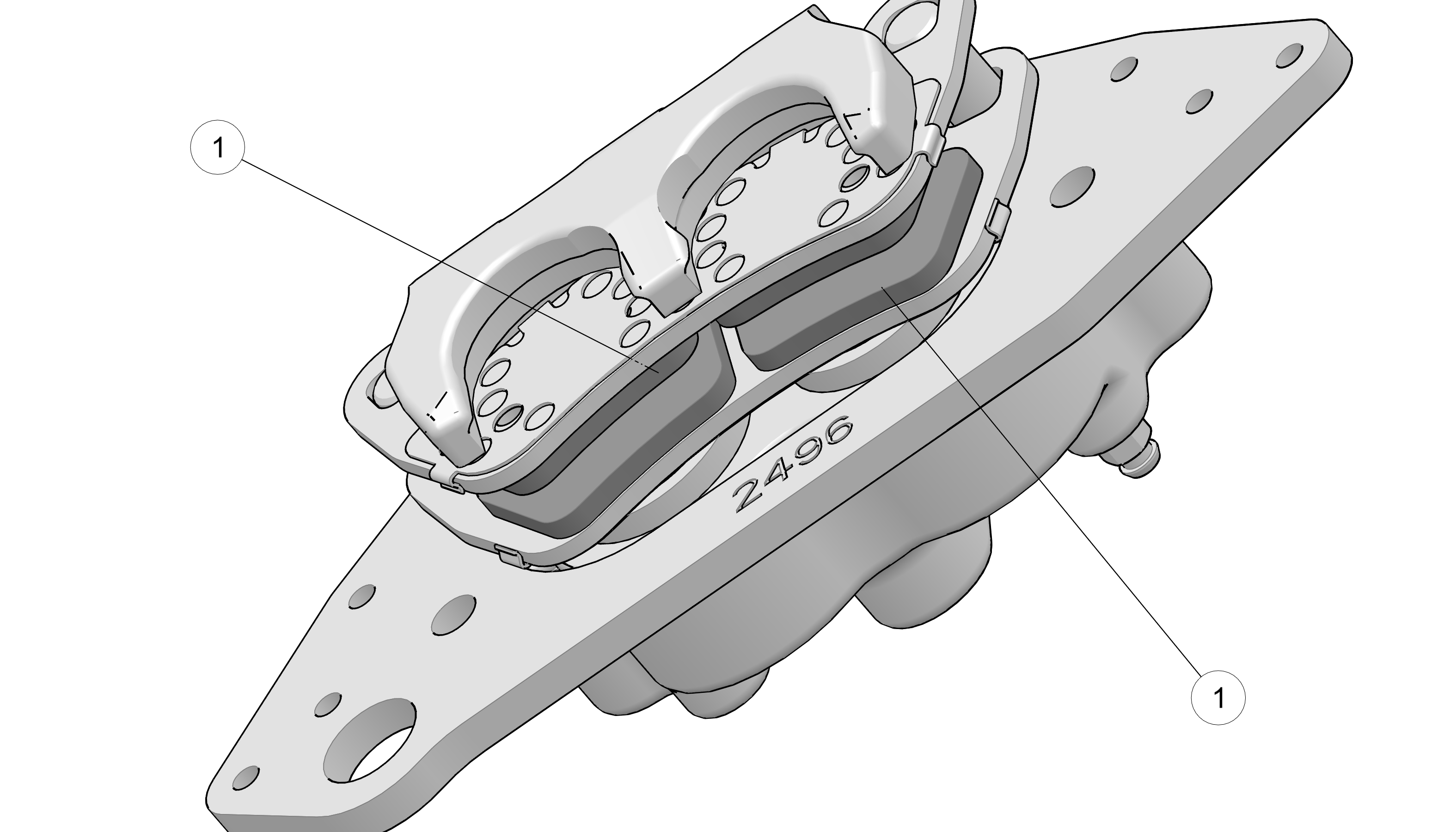Brake Inspection
-
Park the vehicle on a flat, level surface.
-
Make sure the vehicle is in PARK and remove the key.
-
Remove the wheels. See Wheel Removal.
-
Inspect the banjo bolts on the driver’s side of the master cylinder for leaks.
-
Follow the brake lines all the way to the front brake calipers and check for leaks, kinks, or damage.
-
Make sure the brake line retainers are properly secured.
-
Inspect the front brake caliper and connections for leaks.
-
Follow the brake lines to the rear of the vehicle and check for leaks, kinks, or damage.
-
Follow the brake line to the rear brake caliper and check for leaks, kinks, or damage.
-
Make sure the brake line retainers are properly secured.
-
Inspect the rear brake caliper and connection for leaks.
IMPORTANTIf inspection reveals any concerns, do not attempt to drive the vehicle. See your authorized POLARIS dealer for service. -
Inspect the brake pads 1.
WARNINGAlways allow the brake pads to cool completely before inspecting to prevent the risk of burns.
-
Check the brake pad thickness using a suitable tool. Check the thickness on the inside brake pads as well.
0.030” (0.762 mm) -
Replace any brake pads that are worn beyond their minimum thickness.
-
Once the brake system inspection is complete, the tires can be rotated and installed. See Wheel Installation.